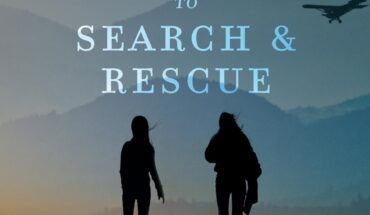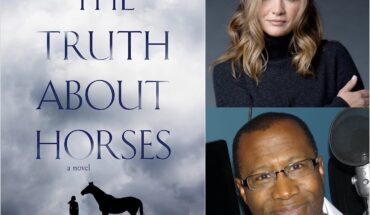 Whitney Scharer, a veteran Grubbie extraordinaire, is just out with her debut The Age of Light (Little Brown, 2019) and already it is flying off the shelves. Set in 1930s Paris, the book is about the love story between Vogue model turned photographer Lee Miller and the artist Man Ray. Critics are hailing the novel as bold, intimate and unforgettable–and I get it. Lee Miller sucked me in, too. Scharer expertly portrays her life in broad glamorous strokes complete with Gatsby-style parties and towering luminaries such as Cocteau. I devoured it all–including the explosive love scenes–but these broad strokes were not what really grabbed me. What moved me to love this book was the underlying tension of Lee’s traumatic past that sat boiling below her every decision and had her self-destructing at almost every turn.
Whitney Scharer, a veteran Grubbie extraordinaire, is just out with her debut The Age of Light (Little Brown, 2019) and already it is flying off the shelves. Set in 1930s Paris, the book is about the love story between Vogue model turned photographer Lee Miller and the artist Man Ray. Critics are hailing the novel as bold, intimate and unforgettable–and I get it. Lee Miller sucked me in, too. Scharer expertly portrays her life in broad glamorous strokes complete with Gatsby-style parties and towering luminaries such as Cocteau. I devoured it all–including the explosive love scenes–but these broad strokes were not what really grabbed me. What moved me to love this book was the underlying tension of Lee’s traumatic past that sat boiling below her every decision and had her self-destructing at almost every turn.
The more I read, the more I understood the truth below all the glamour was that Lee was crumbling inside. Scharer sprinkles in just enough detail for us to understand that the abuse Lee suffered as a child makes her desperate to escape the male gaze as an adult. More than anything, Lee wants to become the woman behind the camera rather than the one trapped under its lens but no amount of work or success seems to free her. With this powerful undercurrent, Scharer has struck a prescient chord forcing her readers to think about the themes of abuse, sexual power and ambition. If only #MeToo had come earlier, would Lee Miller’s life have taken a different turn?
Read this book because it is a beautiful, heartbreaking story. But read it too because it reveals that even the most polished lives have deep cracks threatening to split everyone around them into pieces–and that’s why we read: to be exposed to what we may be too afraid to confront off the page. We at Dead Darlings were thrilled when she agreed to this interview, so let’s get to the good stuff:
Most of our readers are writers—and we want to know: Whitney, are you an outliner or a pantser?
The twelve-year-old boy inside of me can’t see the word pantser without giggling, but let me try to grow up and provide you with an answer. With The Age of Light, I began as a pantser and ended as an outliner. The entire first draft was written by feel, totally out of sequence, with me just following what I wanted to write about. But then when I started revising, I began to see the need for more structure, and soon had created what I fondly call The Grid: a giant Excel spreadsheet that outlines the novel chapter by chapter and details the plot and the emotional arc of each character. The Grid was really crucial in getting me from the messy first draft to a finished book.
How long did it take you to write this book? And a quick follow-up: How many drafts did your Chunky Monkeys writing group read?
It took me seven years: two years of just researching and not writing, and then five years of writing. But it’s complicated, because during the first few years of writing, I was working full time at Grub Street and didn’t have much time to write. It was only when I left Grub and found a job that allowed me more time and space for my creative work that I really began to make huge progress. The Chunky Monkeys saw bits and pieces from three different drafts, and then a subset of them read the full manuscript when it was close to being ready to send out. They are such an important support system for me—I honestly wouldn’t have finished the book without them.
Lee Miller was a real-life artist and model. Her love affair with Man Ray is well known historical fact. And yet your book is a work of fiction. Can you tell us how you researched or prepared to turn these people into characters in your novel? What was the hardest part of imagining their lives?
Well, of course I did tons of research in order to write the book. I also immersed myself in visuals from the period. I’m a very visual writer, so images often served as jumping off points for scenes. Throughout the writing process, I tried to balance my love of research with my desire to bring the characters to life—I think too much research can weigh a novel down. As for what was the hardest part of imagining their lives, I have to say that for a long time, I was very intimidated about the idea of writing their sex scenes. I knew from my research that Lee and Man were very kinky, very sexual. I wanted to do justice to that aspect of their relationship without slipping into…well, smut, I guess. It was very important to me that the sex scenes be integral to the plot and advance the reader’s understanding of Lee and Man’s characters. I hope I pulled it off.
Quick follow up, what surprised you the most as you dug into Miller’s life?
So much about Lee surprised me. She was constantly reinventing herself. I think I was most surprised by how much trauma she went through as a child, and how much of an impact it had on her later life and her ability to form and maintain relationships.
Our readers LOVE this one. What was the biggest editorial change you made while editing The Age of Light?
The book has three timelines: a prologue and epilogue that take place near the end of Lee’s life, the Paris timeline when she is with Man Ray, and a WWII timeline when she is serving as Vogue’s war correspondent. I’d say the biggest change was reordering the short WWII chapters so that they had their own narrative arc within the larger novel, and then adding more of them in order to flesh out that arc. I spent a lot of time thinking and angsting over it!
Moving along to content. You wrote towards the beginning, “tell something enough times it becomes true, just the way a photograph can trick you into thinking it’s a memory.” This play between reality and the illusion created in a picture–the idea that the past is malleable–is a constant theme in your book. Can you tell us why Lee treads such a thin line between the two, and what it meant to you as you wrote the book?
Such a great question. I think what I’m trying to say is that self-image is malleable, not necessarily that the past is malleable. I think images are a complicated subject for Lee, because she has spent so much of her life being objectified, and yet she wants to be a photographer herself. Photographs have the ability to take agency away from their subject, but the act of photographing is—for Lee, certainly—an empowering act. I find it fascinating to think about how much of Lee’s own self-image was based on photographs of her, and how much of it was based on reality. Or are they—can they be—one and the same?
“She could tell him that she doesn’t know who she is, that she never has, that sometimes she just feels like an empty vessel to be filled by whoever she is with or whatever she is doing. She has the sense he might understand.” This small sentence held outsize weight in your novel, showing us just how tragic Lee Miller’s life was. How did you think about balancing difficult emotions like these with the gloss on the appearance of her life?
When I first decided I wanted to write this book, I was worried that Lee’s life seemed too superficially perfect to be engaging to readers. She was beautiful, she came from a family of means, and she didn’t have all that much trouble breaking into the art world when she moved to Paris. But beneath that perfect veneer, there was a damaged woman whose every action was affected by the traumas she endured in her past. That’s what made her so interesting to me. In some ways, she overcame those traumas, but in other ways, she was perpetually held back by them. It’s the central tension of the novel, I think.
The Age of Light is filled with romance and sex, but when I put the book down I wasn’t sure Lee and Man ever truly loved each other. How did you come to understand their connection?
I think that their love is so wrapped up in artistic creation that it’s almost impossible to untangle them. Whether or not that makes it “real love” is up for the reader to decide.
Finally, let’s get personal. What are you reading now? What books do you recommend?
I love answering this question so much. Right this second, I’m reading Sally Rooney’s Normal People, which I’ve been desperate to get ever since I read Conversations with Friends. I think she is a giant talent. I just finished Katrin Schumann’s debut, The Forgotten Hours, which comes out in February and is a really engaging book that tackles issues of consent. After Normal People, I’m going to read Grace Talusan’s The Body Papers, a memoir I’ve read in draft form but am really excited to see in its final version. It’s out in March from Restless Books.
About Whitney Scharer: Whitney holds a BA in English Literature from Wesleyan University and an MFA in Creative Writing from the University of Washington. Her short fiction has appeared in numerous journals including New Flash Fiction Review, Cimarron Review, and Bellevue Literary Review. The Age of Light is her first novel. Forthcoming from Picador (UK) as well as over a dozen other countries. She lives with her husband and daughter in Arlington, MA.




1 comment